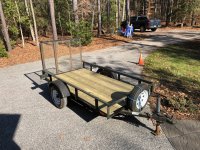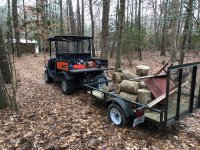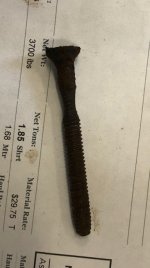BoylermanCT
Veteran Member
- Joined
- Apr 1, 2013
- Messages
- 1,513
- Location
- Barkhamsted, CT
- Tractor
- Montana R2844, New Holland TC29D, Hustler X-One
Since I am stuck at home for a while and the weather is turning nice, I've decided to repaint and replace the deck on my 6x10 trailer. My question is do I simply use 2x pressure treated wood for the deck, or would untreated douglas fir that I coat with preservative be better or something else like red or white oak? Its a single axle trailer rated at 3500 lbs, so I'm leaning towards pressure treated lumber. My other question is does it matter if I use 2x6, 2x8 or 2x10 for the deck? The current deck is 7 2x10's and one 2x6. I could do the same, or I could use 13 2x6's or a combination of any of them. Are 2x10's stronger that 2x6's or 2x8's? Or does it not matter. Using all 2x6's would cost $90. Using 2x10's with 1 2x6 would be $110. All tips or advice welcome. Thanks!



